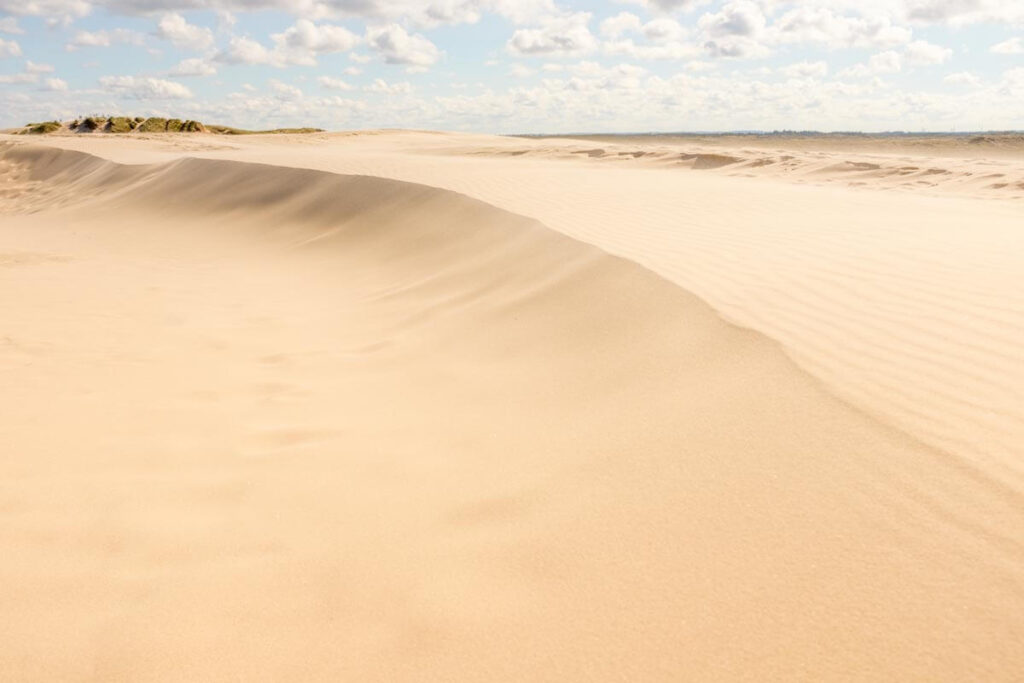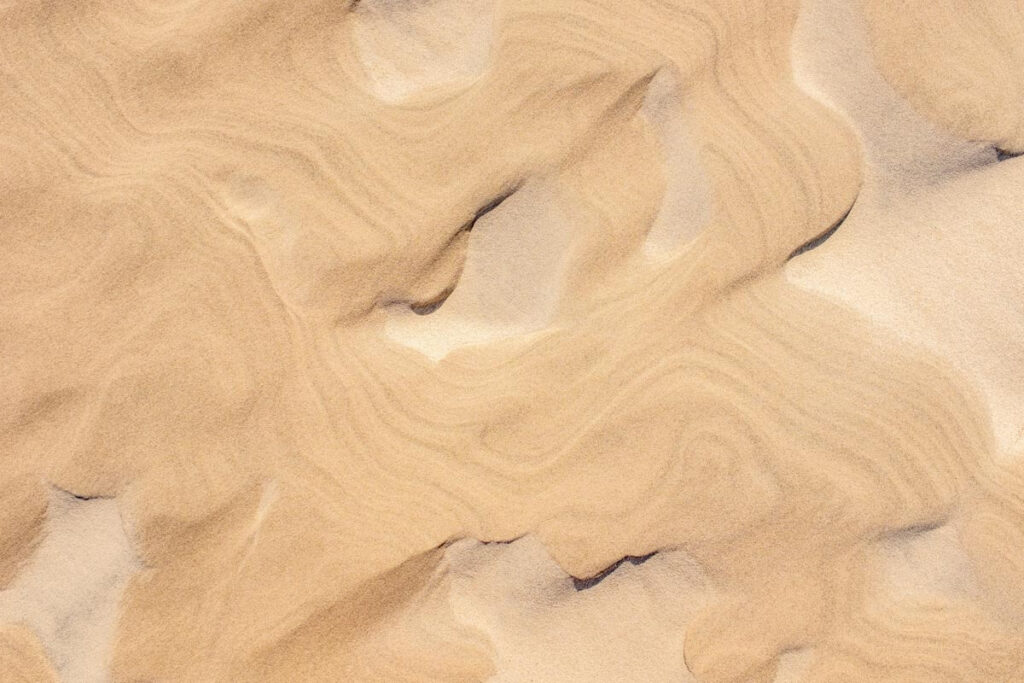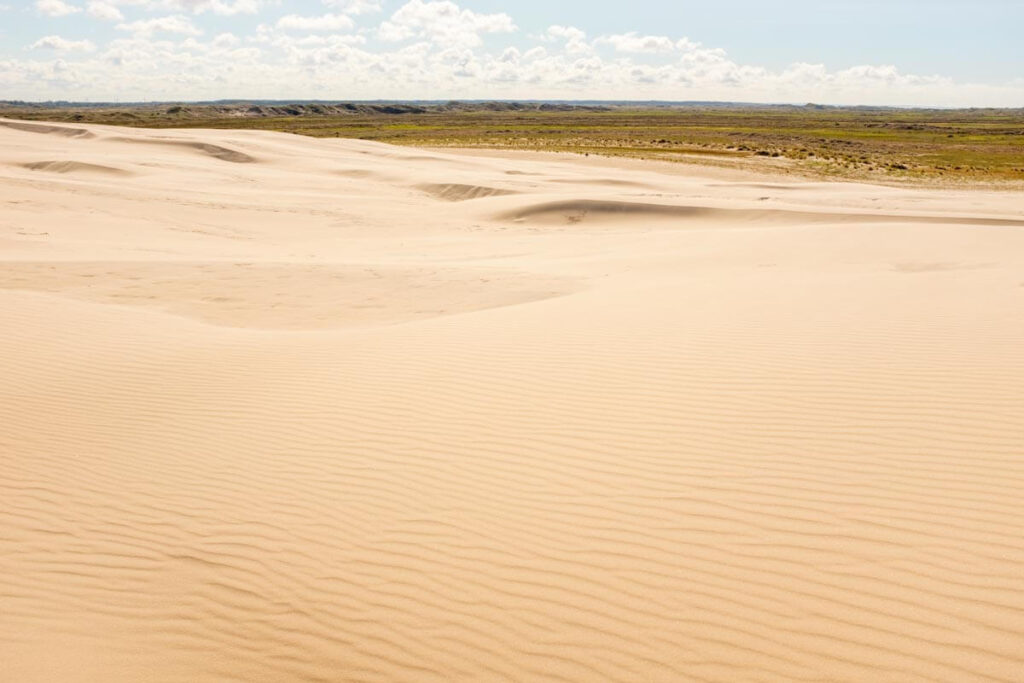In the north of Jutland, Denmark, lies one of the most unique natural phenomena in the country: Råbjerg Mile, a moving sand dune. Due to the wind, this dune continuously shifts eastward. It’s quite a sight! To get an idea of how this works, it’s highly recommended to visit Råbjerg Mile when you’re vacationing in northern Jutland.
Largest moving sand dune in Northern Europe
Råbjerg Mile is located about 16 kilometers southwest of Skagen, Denmark. The area covers about 1 square kilometer and contains approximately 4 million cubic meters of sand. Nowhere else in Northern Europe will you find moving sand dunes of a similar size. At its highest point, Råbjerg Mile reaches 40 meters, offering impressive panoramic views. On a clear day, you can see Kattegat on one side and Skagerrak on the other.

How was Råbjerg Mile formed?
At the end of the 16th century, Råbjerg Mile was formed. During this period, many trees were cut down, there was too much livestock causing overgrazing and various farming practices were carried out recklessly. The soil became increasingly unprotected from the harsh winds coming from the North Sea. This led to massive sandstorms, causing dunes to move uncontrollably across the landscape.
In the 19th century, large parts of the area were planted with vegetation, which caused several sand dunes to come to a halt. However, Råbjerg Mile was preserved as a natural phenomenon. Since then, the area has been protected and the unique natural process continues to unfold.

Future of Råbjerg Mile
The future development of Råbjerg Mile is not entirely known. What is certain is that the dune “moves” about 15 meters eastward every year. On the western side of Råbjerg Mile, the thinning layer of sand forms a fertile ground for new vegetation. Shrubs and grasslands on the eastern side, however, disappear as the dune shifts in that direction. This process could continue for decades. Eventually, the process may slow down when the dune reaches the edge of the surrounding forests. Will the dune continue to rise on the east side as it is blocked, with the westerly winds carrying sand in that direction? Only time will tell!

Visit Råbjerg Mile, parking and tips
On the northern edge of Råbjerg Mile, there is a parking lot, from where you can easily walk into the dune area. Although it’s quite a climb, I still recommend heading to the highest point. It’s truly amazing how, from the top, you can see the sea on both sides in this “desert of Jutland”! Be sure to walk around the edges of the dune and try to get away from the crowds if it’s busy. There are many places where people don’t walk. This allows you to capture beautiful photos of sand ripples, drifting sand and stunning shapes created by the wind.

More to see in North Jutland
Råbjerg Mile is one of the places that I think should definitely be on your must-see list during a holiday in North Jutland. Also, Bulbjerg, Skagen, National Park Thy, the Viking burial site Lindholm Høje, Aalborg and Rubjerg Knude Fyr certainly belong on this list. Want to see more of Denmark? Take a look at this route for a road trip through Denmark, where you’ll visit Copenhagen, Denmark’s chalk cliffs and the islands where these places are located. Prefer to stick along the coast? Then this route along the west coast of Jutland might be a good tip; here, you’ll drive past a variety of fascinating lighthouses. There’s truly so much to do and see in Denmark!